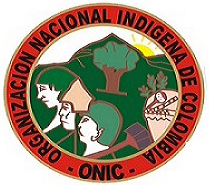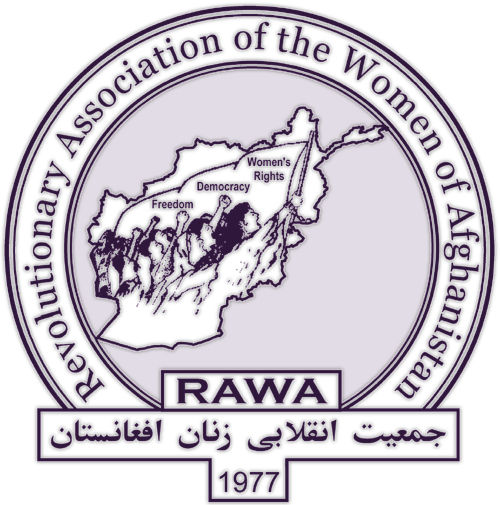Andean Theater
Bolivia: dissent over indigenous identity in census
Bolivia's President Evo Morales sparked controvery by exlcuding the word mestizo, or mixed-race, as a choice for ethnic identification in the national census now underway—the country's first since 2001. Morales said that including the choice would only serve to "divide Bolivia," and pointed out that it had never been used in any previous census. But this census for the first time offers citizens the option of declaring themselves members of one of 40 ethnic groups. Opponents charge that Morales, who has built his political program around indigenous identity, is hoping to use the census results to consolidate power. "I'm not Aymara, I'm not Quechua I'm a mestizo," read graffiti painted on walls around La Paz.
Peru: campesino alliance with 'illegal' miners
On Nov. 11, the Second National Congress of Artisanal Miners was held at Juliaca, in Peru's southern region of Puno, presided over by Hernán de la Cruz Enciso, AKA Tankar Rau Rau Amaru, outspoken president of the National Confederation of Artisanal Miners and Small Producers (CONAMI), pledging to launch new road occupations if the government does not rescind decrees mandating the "legalization" of informal mining operations. A surprise guest was Walter Aduviri, leader of the Aymara campesino struggle in Puno, who has led strikes and protests against mining projects. De la Cruz and Aduviri shared a public abrazo (embrace) and hailed the meeting as "a step towards the consolidation of objectives" of their respective movements. De la Cruz said Aduviri "is against big mining and supports small mining." Peru's pro-business website eeé (for Economy & Energy with Ethics [sic]) on reporting the meeting, added: "Peruvians are now notified of this new alliance of terror and violence, between Tankar Rau Rau Amaru (Hernán de la Cruz) and Walter Aduviri."
Colombia: indigenous peace proposal advanced
An open letter from the National Indigenous Organization of Colombia (ONIC) and the Regional Indigenous Council of Cauca (CRIC) Nov. 22 outlined an "Indigenous and Popular Peace Proposal" that they are demanding be taken up at the talks between the Colombian government and FARC rebels now underway in Havana. The proposal stresses issues not on the agenda at Havana, including the territorial autonomy and traditional authority of Colombia's indigenous peoples. Indigenous leaders will convene a meeting next month to advance the proposal and press demands for openinig the peace process to popular participation. The meeting will be held at the village of La María de Piendamó, Cauca department, which has been declared a "territory of peace and dialogue."
Peru: Water Tribunal indicts Conga project
On Nov. 9, the Costa Rica-based Latin American Water Tribunal, an oversight body on environmental justice formed by jurists and specialists from across the hemisphere in 1998, issued a judgment calling on Peru to cancel the controversial Conga mining project in northern Cajamarca region, finding numerous irregularities in its approval. The ruling, issued in a public hearing in Buenos Aires, questioned the objectivity of Peru's Environment Ministry (MINAM) and Naitonal Water Authority (ANA) in the case; condemned the criminalization and repression of social movements in Cajamarca; and called upon Peru to uphold access to water as an internationally recognized human right. (Celendín Libre, GRUFIDES, Nov. 9)
Venezuela: indigenous protest for land rights
A delegation of some 60 members of the Yukpa indigenous group from Venezuela's western Sierra de Perijá held a rally in Caracas Nov. 7, protesting violent aggression against their communities by cattle ranchers who covet their traditional lands near the Colombian border. Community leaders charged that seven Yukpa men have been have been killed this year at the hands of ranchers or their sicarios (hired assassins) in the municipality of Machiques, Zulia state. Ironically, the violence escalted after the government granted Yukpa communities title to their traditional lands last December. Ranchers claim they never received the 250 million bolivars ($58 million) pledged them by the government as compensation for contested lands. "The title to the land has been granted to us, but it hasn't been enforced because the cattle ranchers still live on our territory, and there are still massacres occurring in our community," said Yukpa leader Zenaida Romero, who still carries a bullet from a recent attack. The Yukpa are demanding direct talks with Minister of Indigenous Peoples Aloha Nuñez to resolve the issue.
Peru: threats against Cajamarca movement
In a sign of community divisions in Peru's northern region of Cajamarca, campesinos from the "influence zone" of the proposed Conga mineral project demonstrated in the regional capital Nov. 1, where they threatened to evict the "Guardians of the Lagunas"—campesinos who oppose the mine, and have established an encampment near the concession bloc to assure that the Yanacocha mining company does not begin work that would impact the zone's highland lakes. "We don't want violence, but they are ursurping our lands and we are reaching an agreement to expel them," said Felipe Palma López, leader of the ronda campesina (peasant self-defense patrol) in the community of Quengorio Alto. Demonstrators accused the Guardians of being "manipulated by politicians."
Peru: land, water conflicts grow in Cajamarca
Local campesinos reported Oct. 26 that thousands of young trout were found dead in the Río Llaucano, in Peru's northern region of Cajamarca, and blame contamination from the ginat Yanacocha gold mine that sits atop the watersahed. The campesinos held a press conference in the town of Bambamarca to announce thier grave fears for the safety of the region's waters. The Llaucano is a tributary of the Marañon, one of the main rivers that drains into the Amazon. The fish were found washed up near the communities of Santa Rosa in Bambamarca province and La Paccha in Chota province. (Servindi, Oct. 26)
Colombia: judge orders return of usurped lands
The Second Civil Court of the Special Circuit for Land Restitution in the northern Colombian town of Carmen de Bolívar issued an historic ruling Oct. 16, ordering the return of 65 hectares to 14 families who had been forced from their lands in the "Massacre of Mampuján," a paramilitary attack carried out on March 11, 2000. The ruling, the first under Colombia's new Land Restitution Law, calls on the government's Victims Reparations Unit to oversee the return of the predios, or private collective land-holdings, to the residents of Mampuján, a caserío (unincorporated hamlet) in María la Baja municipality, Bolívar department. The residents had been forced to flee when the caserío was attacked by the María la Baja Bloc of the United Colombian Self-Defense Forces (AUC). Bloc commander Uber Enrique Banquez Martínez AKA "Juancho Dique" was sentenced to 22 years in prison in July after confessing to massacres in the region. Subsequently, the displaced residents returned to Mampuján from the exile hamlet they had established, "New Mampuján."















Recent Updates
7 hours 7 min ago
7 hours 47 min ago
7 hours 56 min ago
1 day 10 hours ago
1 day 15 hours ago
2 days 6 hours ago
2 days 6 hours ago
2 days 14 hours ago
2 days 15 hours ago
3 days 7 hours ago